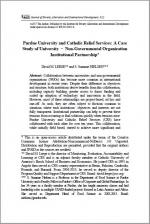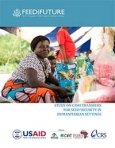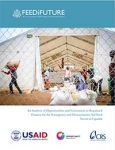Journal article | February 7, 2018
Purdue University and Catholic Relief Services: A Case Study of University – Non-Governmental Organization Institutional Partnership
This article was published in the Journal of the Institute for Poverty Alleviation and International Development (IPAID), in Volume 8, Number 2. Download article
Collaboration between universities and non-governmental organizations (NGOs) has become more common in international development in recent years. Despite their difference in objectives and structure, both institutions derive benefits from this collaboration, including capacity building, greater access to donor funding and scaled up adoption of technology and innovation in the field. However, most of these relationships are project-based, ad hoc and one-off. As such, they are often subject to frictions common to situations where each institutions’ objectives and interests are not fully transparent. Institutional partnership can help to prevent these tensions from occurring or find solutions quickly when tensions arise. Purdue University and Catholic Relief Services (CRS) have collaborated with each other for over ten years. This collaboration, while initially field based, started to achieve more significant and lasting results after it was formalized through a commitment by senior leadership in both institutions. This case study documents the evolution of this partnership, from its ad hoc origins in the field to a full institutional commitment, and illustrates the lessons learned along the way.





